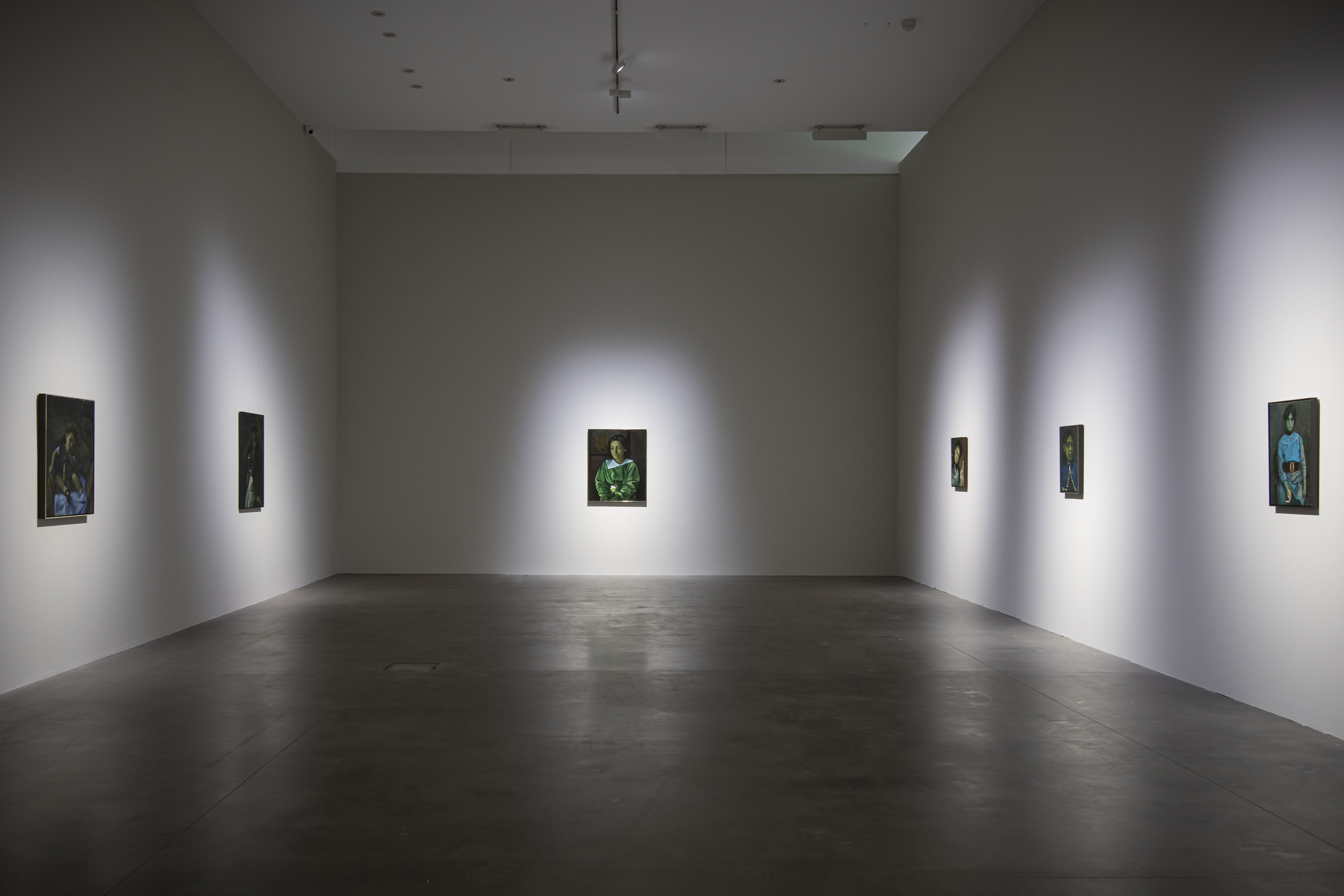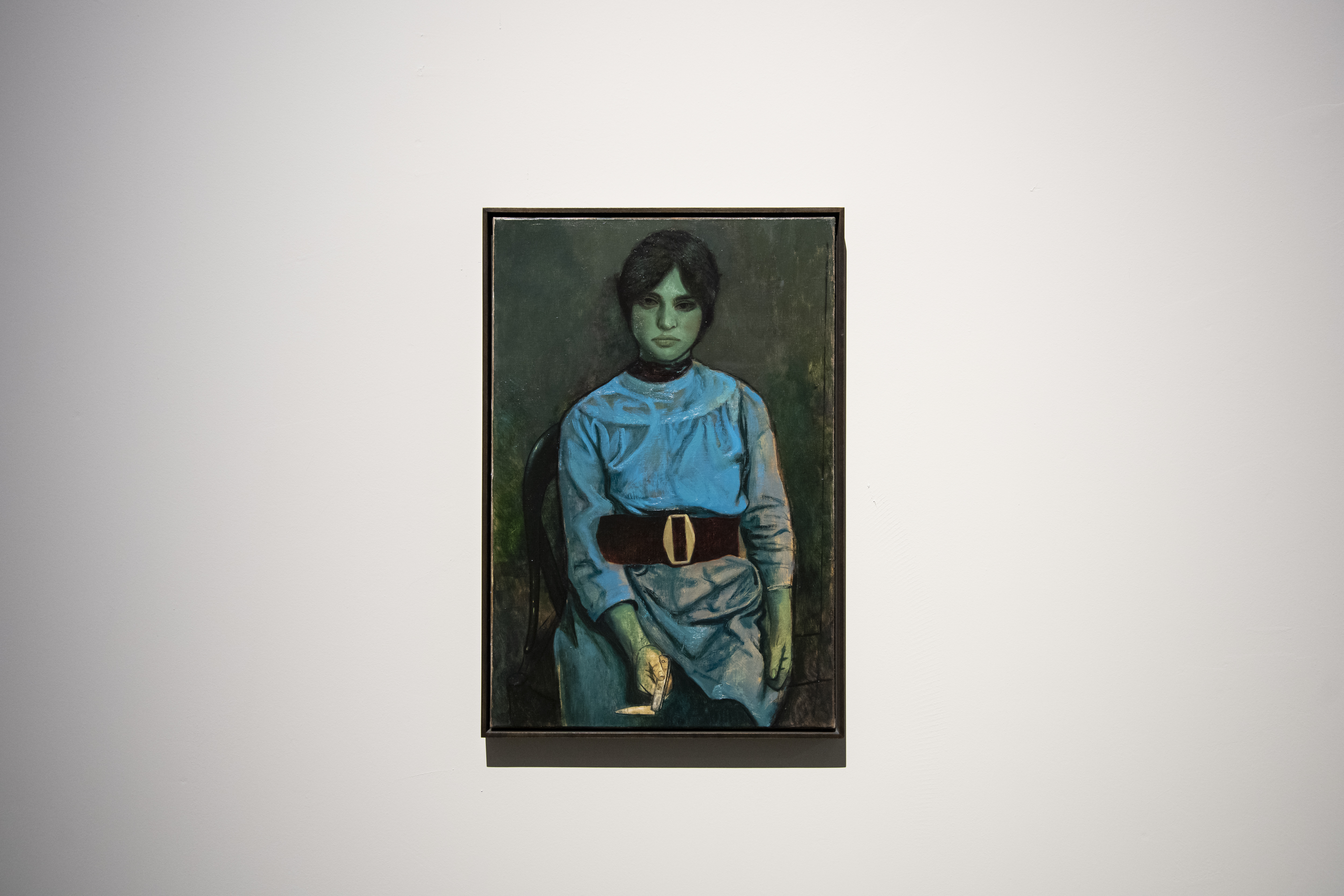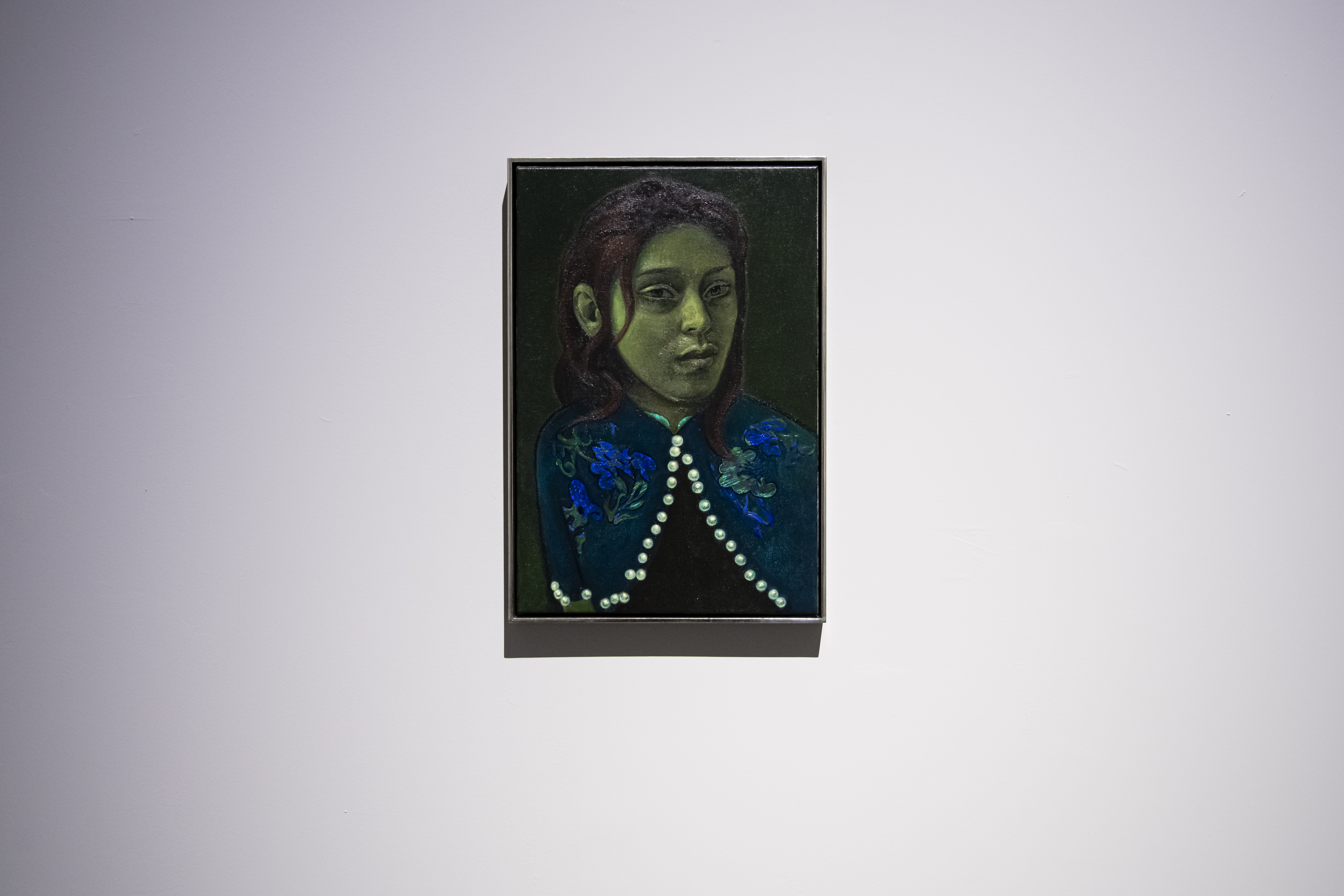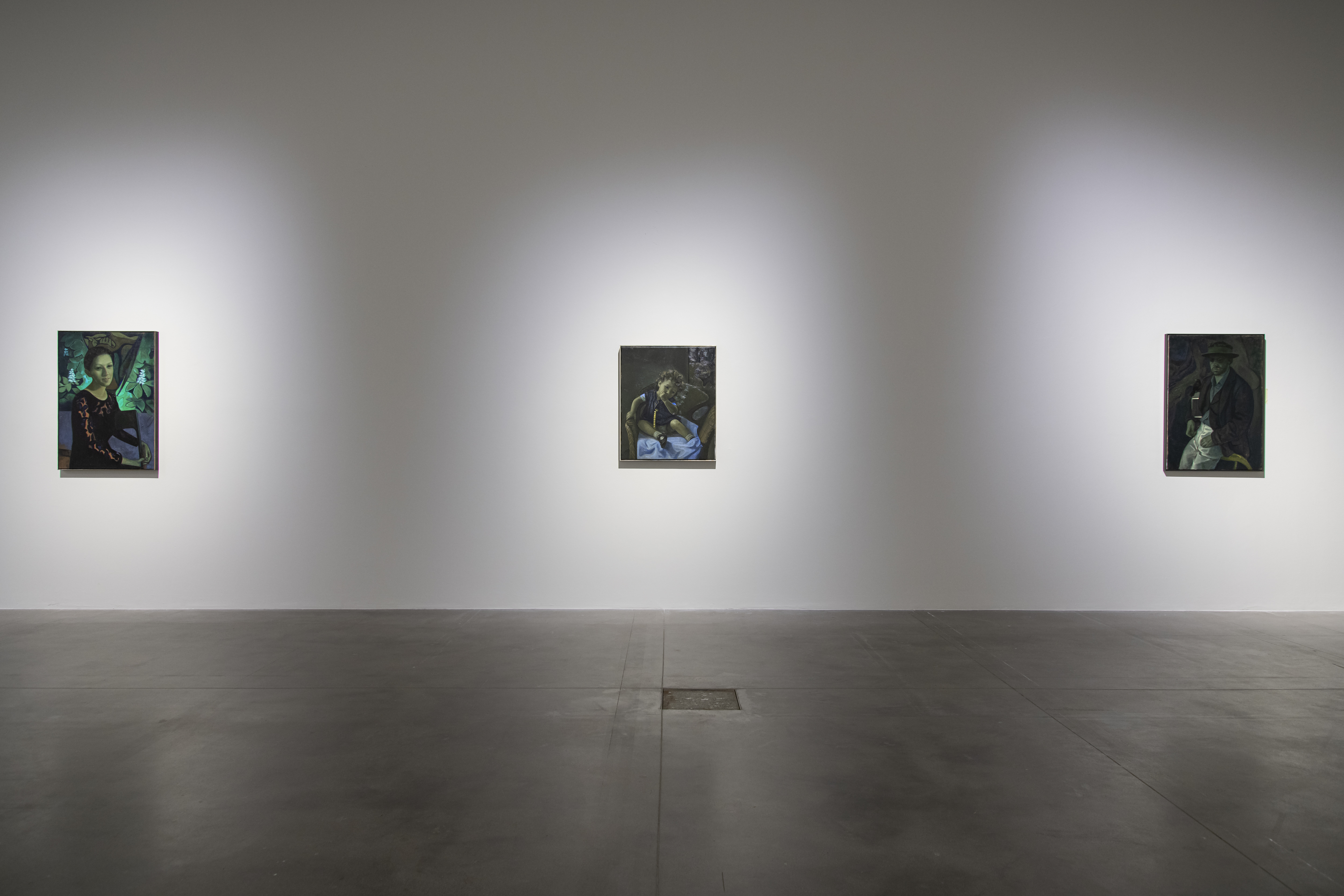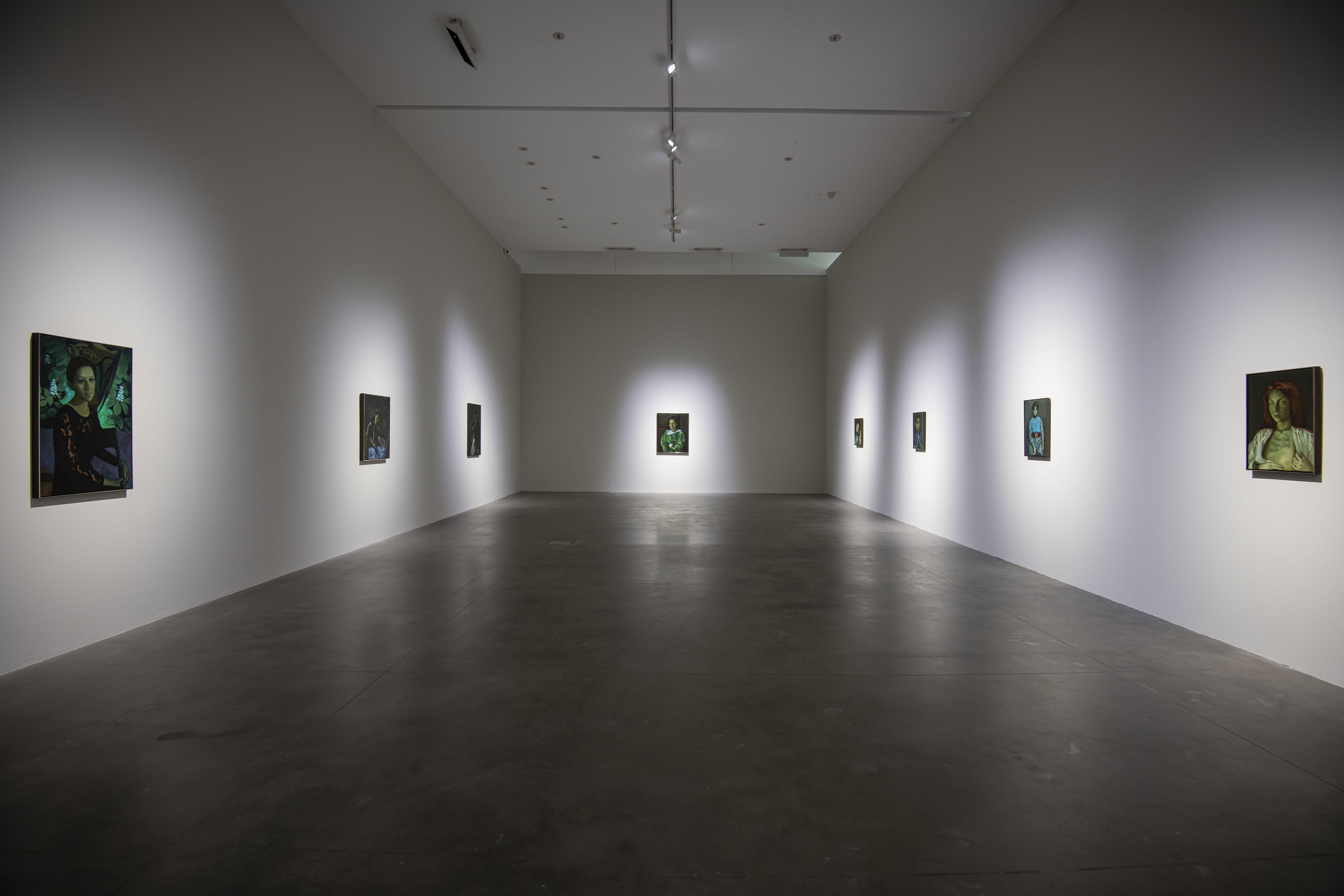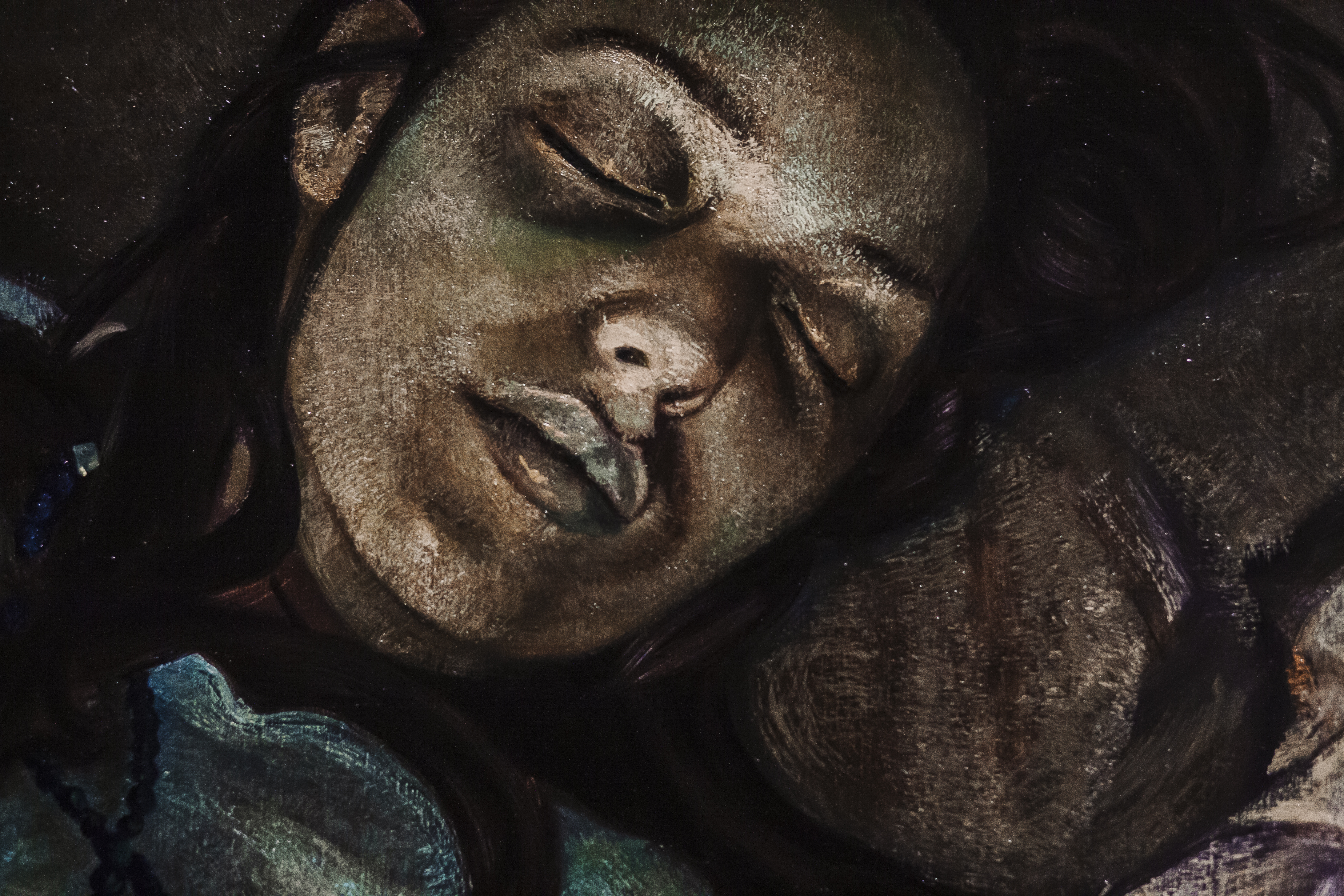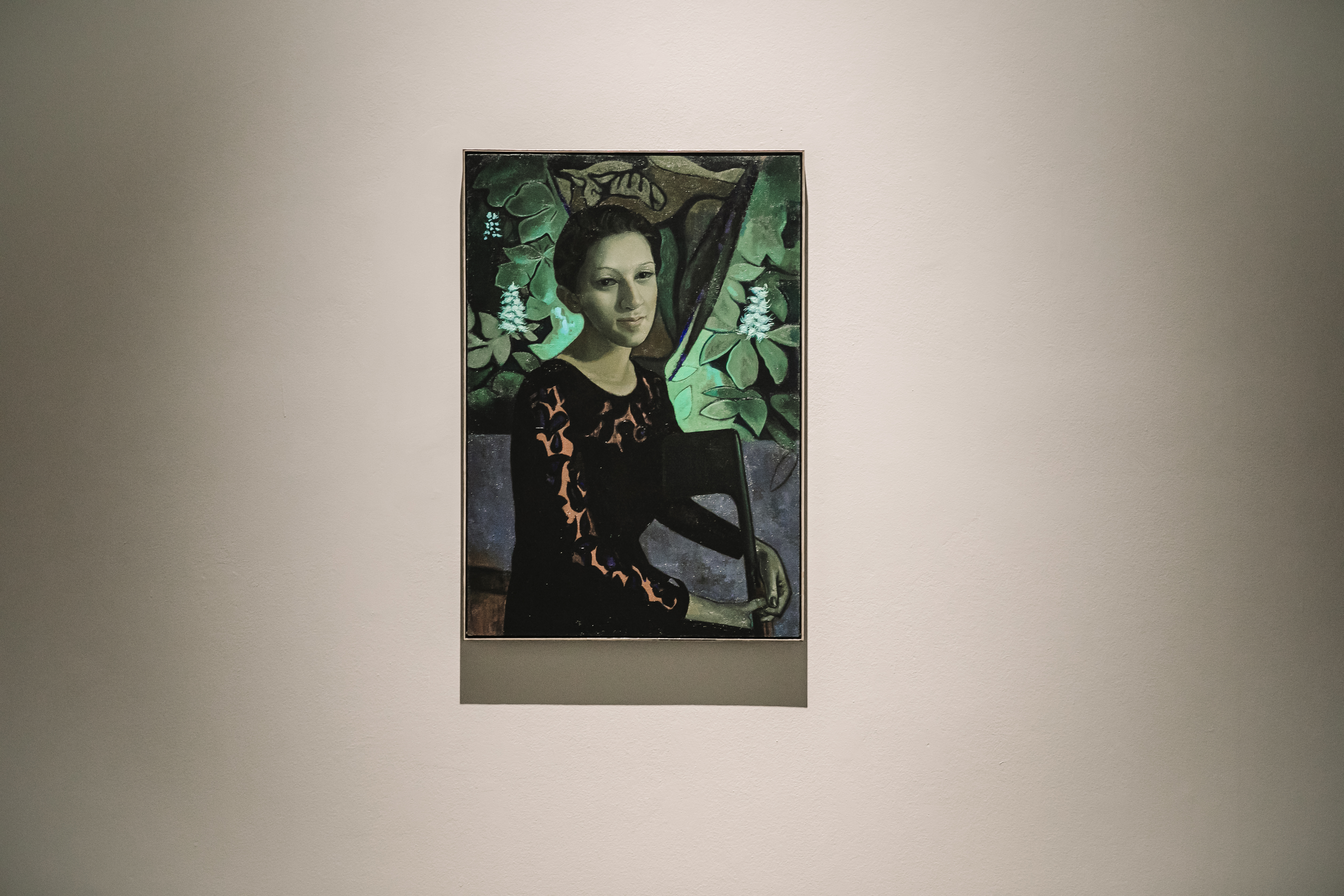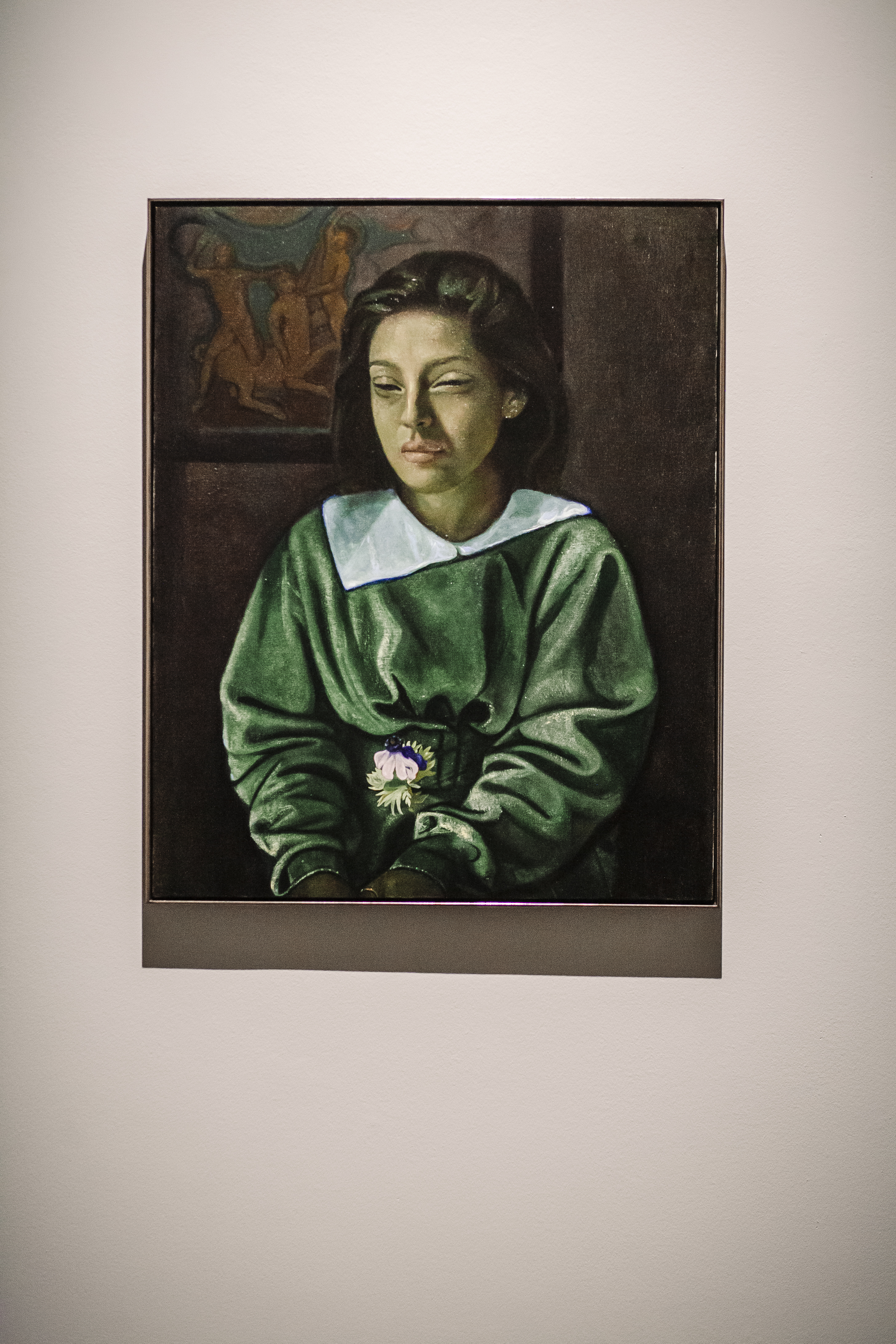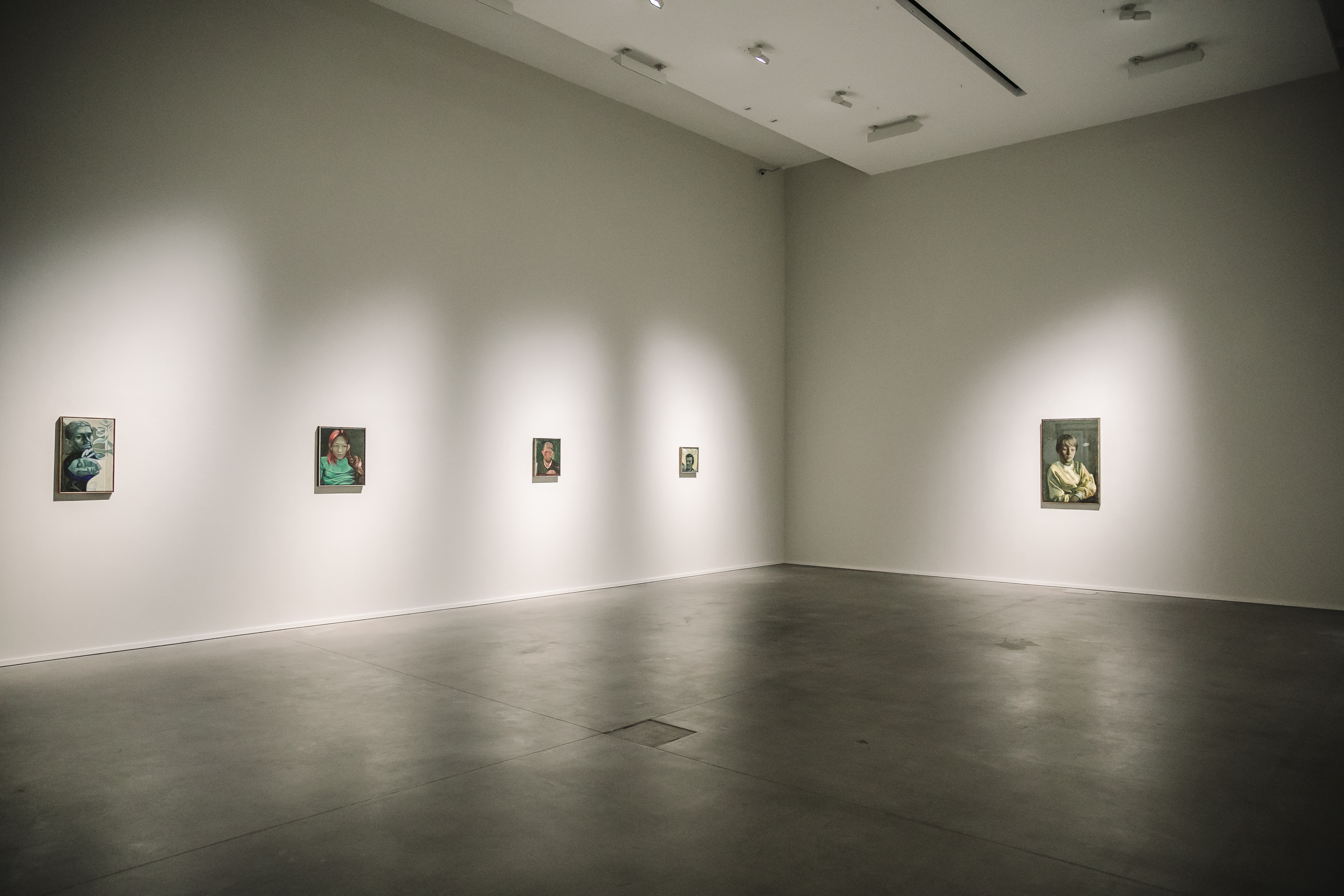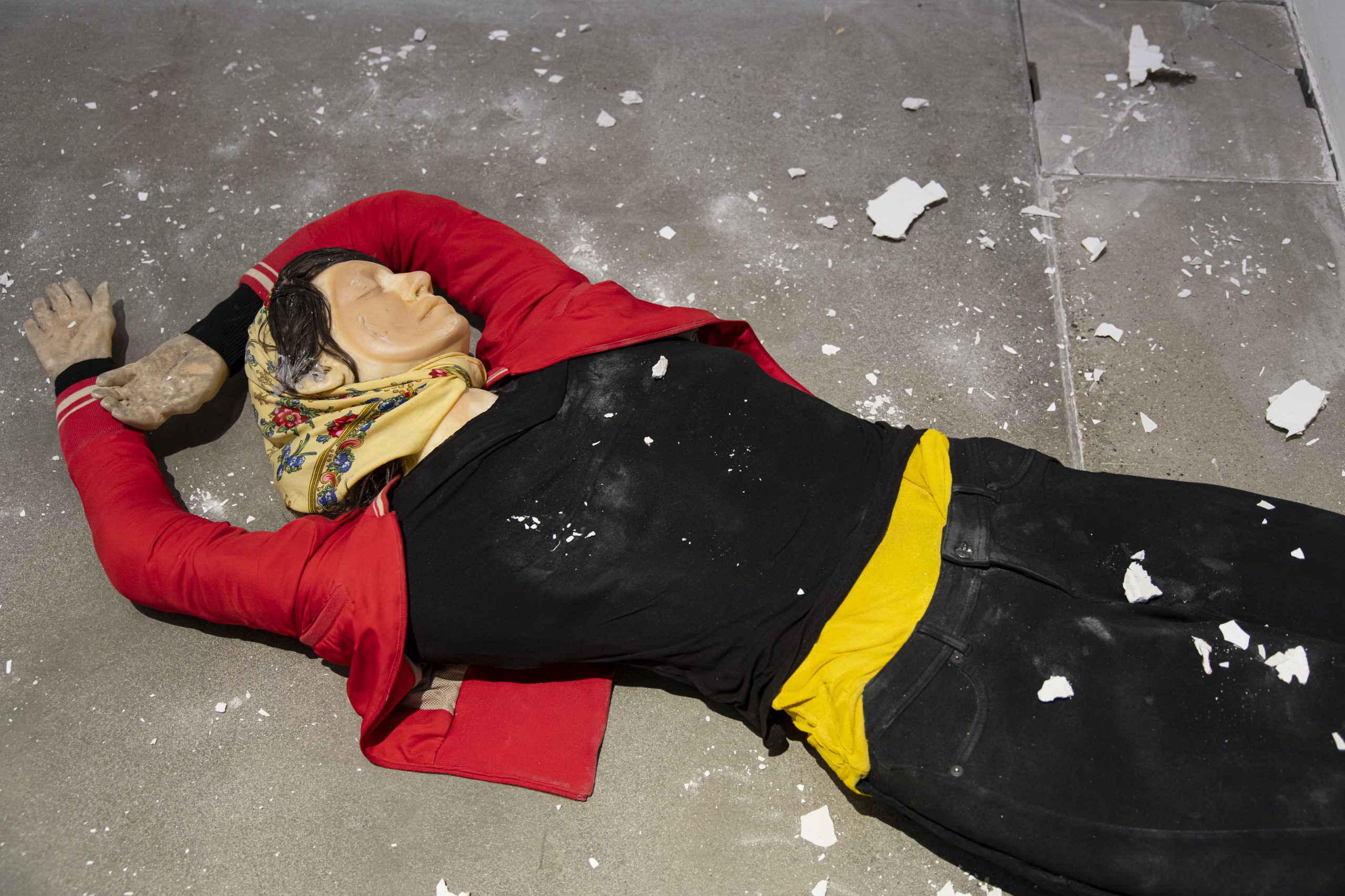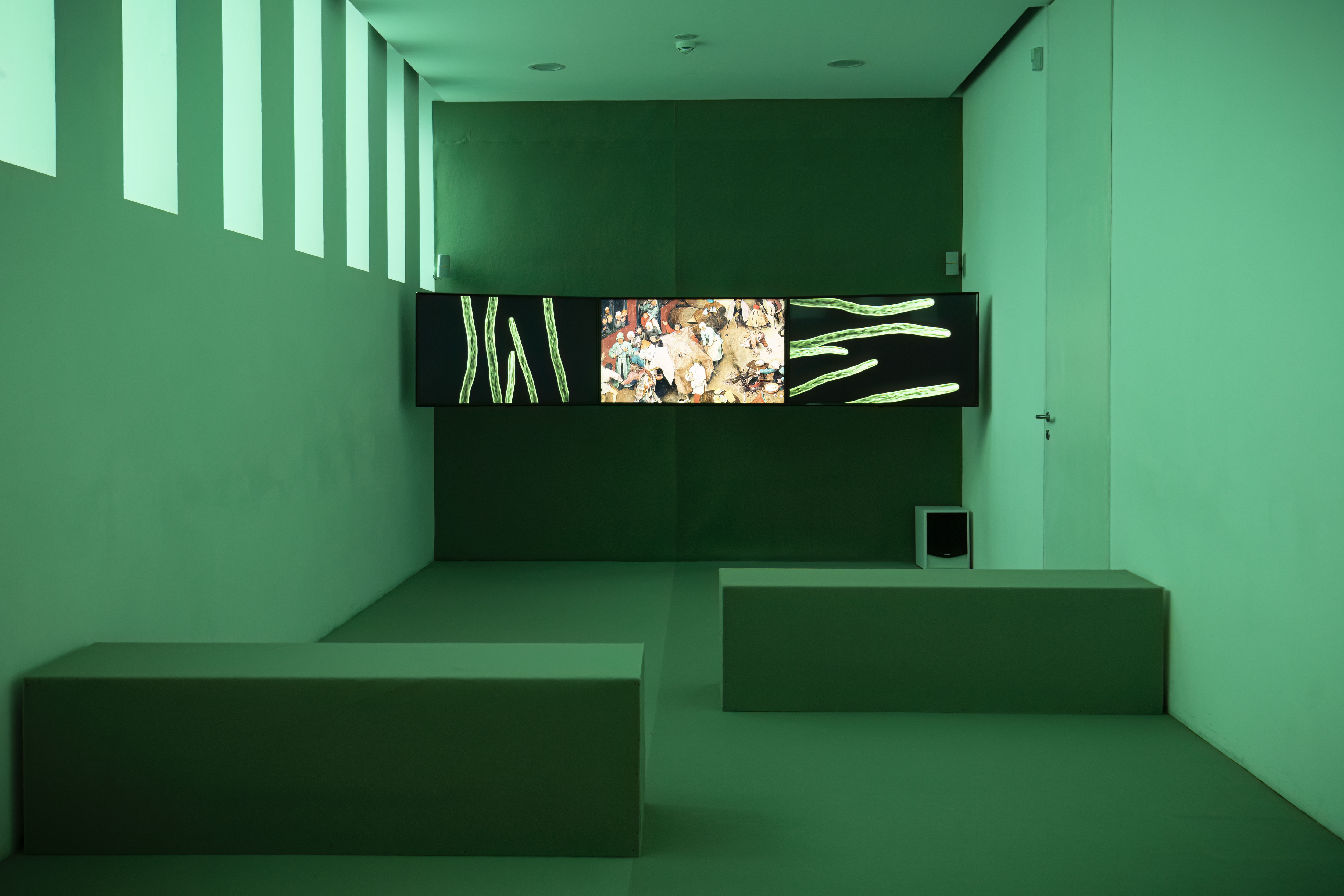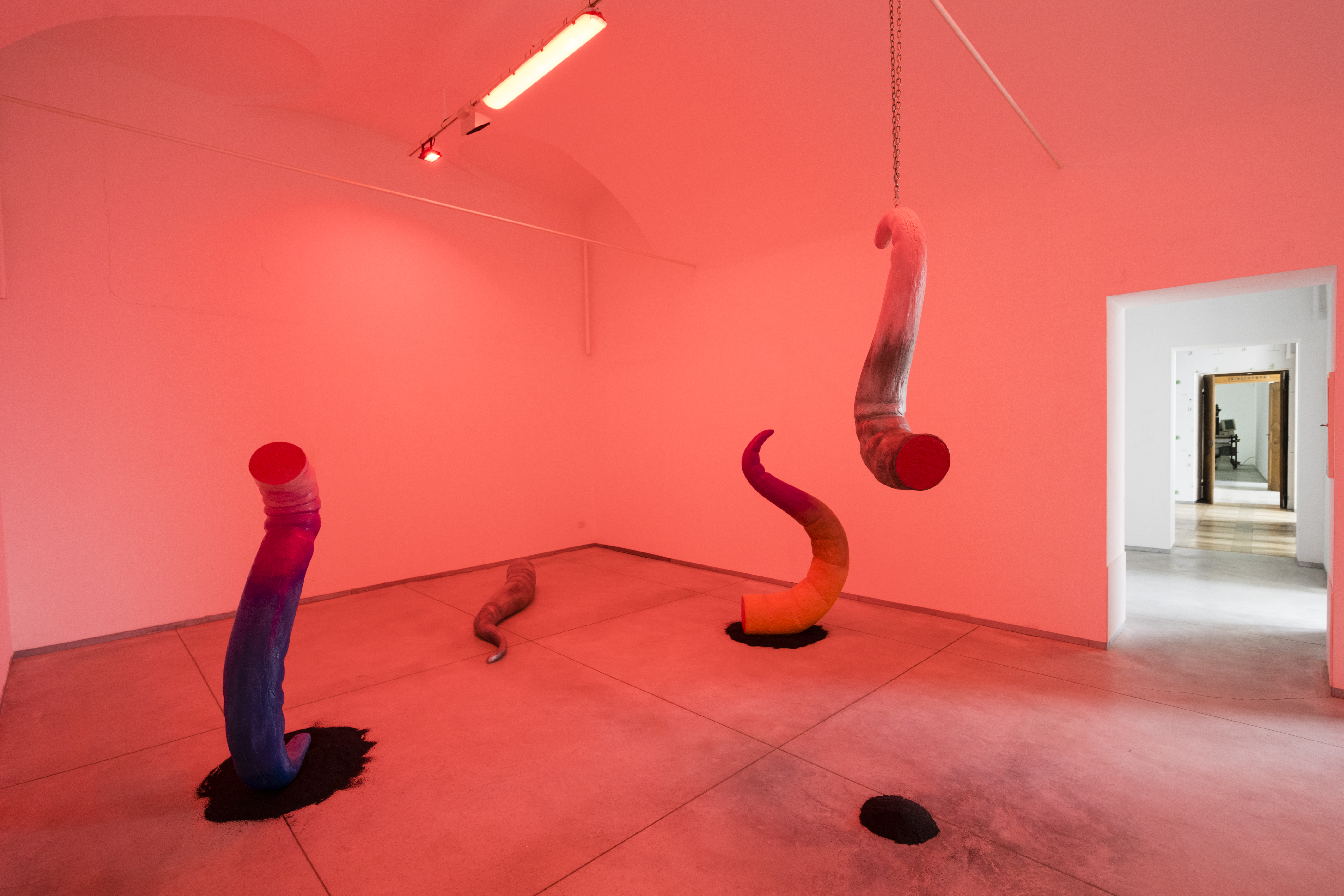Bringing together a selection of twenty portraits and self-portraits, Victor Man’s solo exhibition “Eye-lids, Towards Evening”, with a critical text by Alessandro Rabottini, focuses on those painting genres that have taken on a pro-found relevance within his artistic practice over the last decade.
Together with images of the artist himself, these paintings depict individuals that entered his life, either loved ones or encounters of the past, thus eliciting an inner, autobiographical narrative that manifests an essential concern of Man’s work, namely that the most intimate subject matter of art is individual existence together with its poetic transfiguration.
Bathed in a mostly penumbral light, these figures are caught in contemplation, absorbed in their thoughts, or portrayed in states of abandon and tender closeness, they seem to inhabit a profoundly hu-man time and space yet, simultaneously, withdraw from the present world.
This coexistence of familiarity and distance, of observational likeliness and dreamlike suspension, is the space where these works welcome the viewer. Faithful and individual features emerge from a semi-dark, liminal space of feelings and thoughts that are ungraspable like the interval of transition between day and night to which the exhibition title refers. In fact, “Eyelids, Towards Evening” evokes not only the moment in a day that can be perceived as a threshold, as a space of metamorphosis—that in which light gives way to darkness—but also the passage between sleep and wakefulness, the condition in which the shapes of everyday experience gradually morph into symbolic and oneiric semblances.
The arc of human existence and the repertoire of affections is contemplated in its entirety, from the ex-perience of birth and parenthood (as we find in the works R with Turtle and in Rózsa Victoria) to the real-ization of death and separation (Father), and the persistence of the memory of the deceased in the soul of those left behind (Self-Portrait at Father’s Death).
Here, the presence of death is a natural dimension of human existence—a fact that is as organic as it is spiritual and one that modern sensibility censors and exiles into a purely clinical space—it is one of the aspects that gives these paintings an elegiac quality, if we consider the elegy a form of poetry that, since Latin antiquity, has persisted in modern literature as a lyrical composition inspired by personal events and with the tone of melancholic celebration.
Through his pictorial language, Victor Man reclaims the archaic quality of this poetic genre, and thus explores the contemporary possibilities of a mystical vision of things and human happenings, where the term “mystical” allows the viewer to contemplate the possibility of a glimmer, in the mundane manifes-tations, of something that mundane is not.
Hence, Victor Man once again insists on the notion of a suffused coexistence of things with each other. First and foremost, the persistence of the past in the present, which is here expressed through a style that absorbs multiple references to art history, from medieval and Renaissance symbolism to the adop-tion of primitive imagery by Expressionism and Surrealism. Masculinity and femininity also coexist in a regime of mutual simultaneity, if we look at the subtle androgynous quality of works such as the two Untitled of 2012 and 2013, in which the portraits’ features reveal an osmosis of different identities that open up and complicate the very notion of portraiture. However, what coexists in Victor Man’s prac-tice is not only the different dimensions of time and forms of feeling but also, and above all, the dimen-sions of human existence, which in its extension contemplates eroticism alongside spirituality, affection alongside its renunciation, and resemblance alongside mystery and estrangement.
